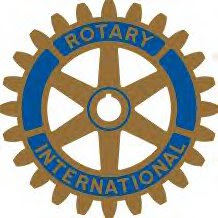 (By Sheila Washington RCNY)
(By Sheila Washington RCNY)Eight thirty AM, February 21, 2007, on a beautiful NY morning, the meeting of the Rotary Club of NY at the UN was called to order by Dr. Nikolaus Helbich. Three interns from Germany were among the visitors. After introduction of guests and a sumptuous breakfast catered by the Penthouse Café at the German Mission, Director Giorgio Balestrieri introduced the speaker Dr. Mikio Tajima.
Dr. Tajima, a New York Rotarian, is a UN Director Retiree, Professor Emeritus Kawansei Gakuin University, Japan and UN Global Compact Advisor. In 1972 he visited Nepal as a member of UN Fact-finding mission to South-Asian landlocked countries. What he witnessed at Biratnagar, the major transit point with India and Nepal made him an instant sympathizer and supporter of Nepal. Upon retirement from the UN he formed Reconciliation 21 (R21), a conflict prevention NGO with a mission to strengthen Nepal’s NGO system; and, coordinate outside efforts to bring productivity and stability to the country.
About Nepal: It is a Kingdom of about 27 million people, mostly Hindus. Its monarchy ruled for nearly 240 years until 1990, when there was the first people’s uprising. At that time the King agreed to install a multi-party system. Subsequently, elections were held and a Parliament installed. In 1995 the head of the Communist Party of Nepal (CPN), which was then the majority party, became the Prime Minister. In short order, he was dismissed resulting in the party splitting into two groups the Maoist (CPN/M) and the Marxist Lenin Group (CPN/UML) Both groups opposed the monarchy. The former resorted to force while the latter denounced the use of force and remained the legitimate political party.
In February 2005, the 15 year democratic exercise came to an end. The King, Gyanendra Bir Bikram Shah Dev dismissed Prime Minister Deuba and his government and declared himself an absolute monarch and took direct control of the army. Massive arrests, suspension of civil liberties and declaration of a state of emergency followed. Communication with the outside world was cut as a stunned international community looked on. The King’s undemocratic actions resulted in the 7 large political parties forming an alliance (SPA) with commitments to closer ties with the Maoists.
With the widespread political discontent the SPA and the Maoists began a program of nationwide strikes and Mass Street protests. After 19 days and with the decisive support of civil society groups the King handed over power to the political parties and reinstated Parliament. On April 28, 2006, Parliament convened and a new Prime Minister, G. P. Koirala was sworn in two-days later.
The King’s army was renamed the “National Army” and placed under Prime Minister Koirala control. Under increasing pressure from the international community, the UN was allowed to open the UN High Commissioner for Human rights (CHCHR). With this action, the UN began to emerge as a positive outside force in the eyes of the people of Nepal.
The SPA and the Maoists signed a ceasefire agreement and decided to hold Constituent Assembly elections in June 2007. The biggest challenge for the new government is the disarming of the Maoists insurgents. However, both the SPA and the Maoists agreed to entrust the arms- management task to the UN. In addition, Nepal’s list of pressing issues also includes, a new constitution, the Kings future, and the shape of the new national government (federal or another model).
Dr. Tajima underscored the point that the peace process alone will not be sufficient nor be sustainable unless accompanied by confidence-building measures at various levels of its civil society. He travels to Nepal in early March for a two-day Round Table with university students, teachers, businessmen, political leaders and mass media in Kathmandu, the capital. The theme of the meeting is promotion of a peace culture (tolerance, reconciliation and forgiveness). The objectives are to begin the reconciliation organizing and create implementation plans to enable the mobilization of networking support.
In conclusion, Dr. Tajima expressed his hope that the resulting guidelines and think-pieces from this and subsequent meetings will be used by international NGOs, university students and others to promote awareness around the world about Nepal.
When the meeting adjourned at 9:45, it was clear that the people of Nepal have a dedicated and highly motivated champion in Dr. Tajima.
Postscript: As if to a confirm Dr. Tajima mission, on March 4, 2007, the New York Times published an article about traveling in Nepal, headlined, “As Political Unrest Eases, Travel Picks Up.” The article cited developments such as, the signed peace deal with the Maoist rebels after 10 years of bitter conflict, the temporary constitution now in effect, and the interim Parliament that is bringing stability to the country. The UN Security Council voted in January to set up a mission to oversee the disarmament and cease-fire accord. This adds to reasons being cited for the renewed interest and the return of adventure-oriented travelers to Nepal.









